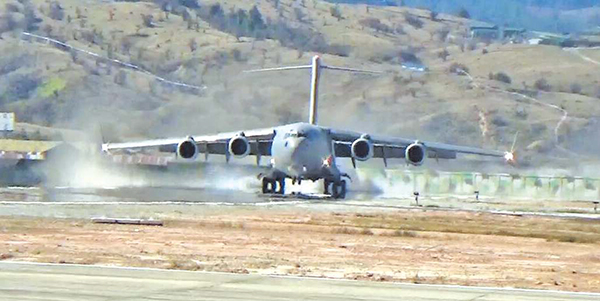The Ministry of Defence (MoD) signed a contract for Modernisation of Air Field Infrastructure (MAFI) of 37 airfields for Indian Air Force (IAF), Indian Navy (IN) and Indian Coast Guard (ICG) with Tata Power SED (TPSED) at a cost of nearly Rs 1,200 crore on 8 May. The company won the contract in the face of stiff competition from the world’s most advanced electronics vendors.
While 24 of these airfields belong to the IAF, nine of them are from the Navy and two each from Indian Coast Guard and Aviation Research Centre under the Cabinet Secretariat.
Phase-1
In 2011, in one of the biggest private sector engagement in the defence sector, Tata Power had bagged the over Rs 1,219 crore-contract, against a global defence tender of MoD, for modernization of IAF’s 30 airfields and linking the instruments to the ATC, in phase-1 of the project.
It was to be implemented in a two-phases over a period of around four years. The project of strategic importance aimed to improve the capability of the airfields to handle modern combat air fleet inducted by IAF.
The MAFI Phase-1 was to be completed in 42 months – by October 2014. But the project was completed by 2018, nearly four years behind schedule.
Phase-2
The deal follows from the earlier contract, MAFI-1. The 30 air bases already modernised under MAFI-1, include eight along the India-China border. Their upgraded infrastructure now allows aircraft to take off and land in visibility as low as 300 metres. This could generate crucial combat air support for ground forces battling in bad weather conditions. Only major commercial airfields provide better facilities than what MAFI offers.
MAFI Phase-II is a turnkey project that includes installation and commissioning of modern airfield equipment like Cat-II Instrument Landing System (ILS) and Cat II Air Field Lightning System (AFLS), etc. The modern equipment around the airfield will also be directly connected to Air Traffic Control (ATC), thereby providing excellent control of the airfield systems to the air traffic controllers. The upgrade of navigational aids and infrastructure under this project would enhance the operational capability by facilitating air operations of military and civil aircrafts even in poor visibility and adverse weather condition while enhancing aerospace safety.
This upgrade of navigational aids and infrastructure allows air operations by military and civil aircraft even in poor visibility and adverse weather conditions, while also enhancing flight safety.
The IAF’s and navy’s new aircraft C-130J Super Hercules, C-17 Globemaster III, Sukhoi-30MKI, MiG-29K and the Rafale (when it enters service) would be able to utilise the full potential of MAFI. Older aircraft like the MiG-21s don’t have on-board electronics needed for utilising MAFI instrumentation.
The MAFI upgrade will be good news also for commercial air operations, when they resume after the COVID-19 lockdown. Commercial flights operate from some 30 IAF and navy air bases, including Chandigarh, Goa, Leh and Srinagar.
The pace of work under MAFI is constrained by the fact that only 5 to 6 operational air force bases can be out of action at any given time. Only when work on these is completed can TPSED begin working on a fresh batch of air bases.
The project will give a boost to over 250 micro, small and medium enterprises (MSMEs), which will directly benefit from being involved in execution of various activities of this project. This contract would aid in infusing the much needed capital in the market and boost employment generation in such fields as communications, avionics, information technology, apart from civil and electrical equipment and construction.













